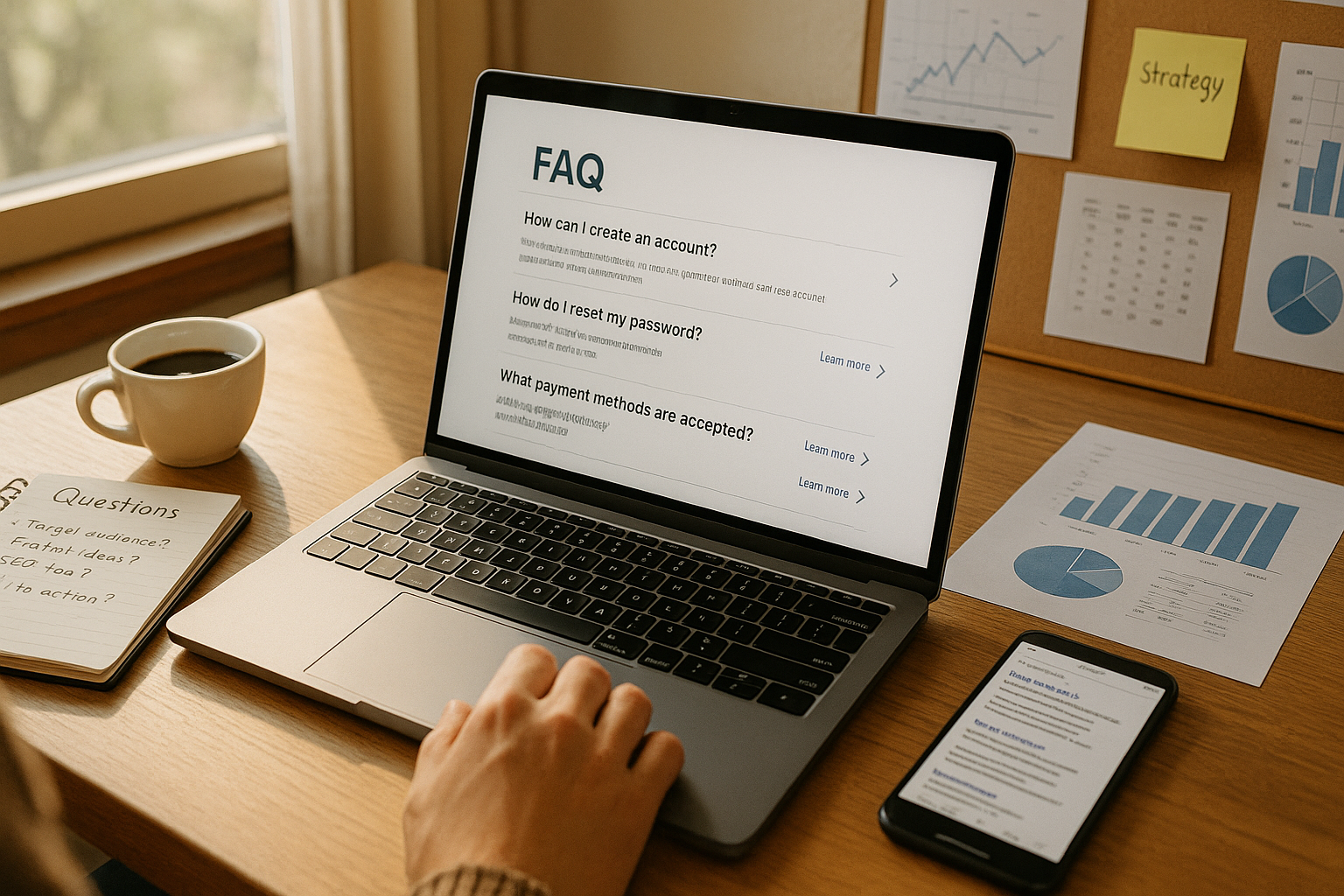How can I improve my Google Ads quality score?
This is a subtitle for your new post
Improving the Google Ads Quality Score is essential for any business looking to lower ad costs and boost campaign effectiveness. The Quality Score is Google’s way of measuring how well your ads, keywords, and landing pages align with user searches, directly impacting ad performance and costs. Whether a small business in Pennsylvania or a national e-commerce brand, optimizing your Quality Score means more qualified leads at a lower price—fueling faster growth and a greater return on ad spend. This guide unpacks step-by-step strategies to systematically raise your Quality Score and outlines mistakes to avoid if you want your campaigns to thrive in a competitive digital landscape.
Understanding Google Ads Quality Score
The Quality Score is a diagnostic tool within Google Ads, rating your ads and keywords on a score of 1 to 10. It reflects Google’s estimate of the quality and relevance of your ads, keywords, and landing pages compared to other advertisers. Three main components affect this score:
- Expected click-through rate (CTR)
- Ad relevance
- Landing page experience
A higher Quality Score reduces your cost-per-click (CPC), increases the likelihood of achieving better ad placement, and ultimately ensures that your budget goes further in generating valuable leads. This section dives deep into exactly how each of these metrics works, how Google calculates them, and why continuous optimization must be part of every marketing strategy.
Optimizing Expected Click-Through Rate (CTR)
One of the strongest drivers of Quality Score is the expected CTR—the likelihood your ad will be clicked when shown. Google uses historical data to make this prediction, weighing the performance of each keyword and its related ad, along with the overall click history of your Google Ads account.
Key steps to improve expected CTR include:
- Creating compelling ad copy that matches user intent
- Leveraging strong calls to action (e.g., “Get a Free Quote,” “Learn More Today”)
- Making offers and value propositions clear up front
- Regularly A/B testing different headlines and descriptions
- Ensuring all variations are closely aligned with keyword themes
Advertisers who focus on CTR will likely see an immediate uplift in Quality Score and an increase in the volume and quality of traffic generated through their campaigns.
Maximizing Ad Relevance
Ad relevance measures how closely an ad matches the intent behind a user’s search. To boost this factor:
- Ensure the ad text precisely reflects the target keyword and message
- Design tightly themed ad groups with specific keywords (avoid broad, catch-all groups)
- Split larger groups into smaller, hyper-focused ones for targeted messaging
- Use dynamic insertion features to mirror searched terms in the ad copy
- Test variants often to determine which copy resonates most strongly with your audience
The tighter the match between your keywords, ad, and user intent, the more likely Google will reward you with a higher relevance score—leading to both more clicks and a better ad position.
Enhancing Landing Page Experience
After a user clicks an ad, the landing page experience is crucial. This component weighs several factors in determining overall user satisfaction and Quality Score:
- Ensure landing page content is specifically related to the ad and keyword
- Provide a clear, straightforward path for users to accomplish their goals (e.g., request a quote, book an appointment)
- Optimize page load times—users expect a page to load in two seconds or less
- Eliminate unnecessary pop-ups and distractions
- Craft useful, original content that delivers on the ad’s promise
Improving landing page experience not only impacts Quality Score but also increases conversion rates, meaning you get more returns from every paid click.
Strategic Keyword Selection and Grouping
Choosing the right keywords and organizing them into effective groups is fundamental to Quality Score improvement. Start by:
- Using keyword tools to research high-intent, relevant search terms
- Avoiding irrelevant or generic keywords that can reduce your score
- Grouping similar keywords together, each with tailored ad copy
- Monitoring search queries regularly for negative keywords to exclude non-converting terms
Consider the search intent behind each keyword—are users ready to buy, looking for information, or wanting to compare options? Structure campaigns to match those intentions, driving better relevance and higher CTR.
Leveraging Ad Extensions for Better Results
Ad extensions are enhancements that add more information to your ad and increase its visibility, contributing to improved performance and Quality Score. Common extensions include:
- Sitelink Extensions: Direct users to specific pages of your website
- Call Extensions: Allow users to call your business directly from the ad
- Location Extensions: Show your address and map, useful for local businesses
- Callout & Structured Snippet Extensions: Highlight special offers, features, or unique value propositions
Implementing multiple relevant extensions increases the real estate your ad occupies in search results and can significantly increase your CTR and Quality Score.
A/B Testing and Ad Copy Optimization
Testing different versions of your ads—known as A/B testing—is key to understanding what resonates most with searchers. To maximize Quality Score:
- Always run multiple ad variations in each ad group (at least 3 per group)
- Test different headlines, CTAs, offers, and descriptions
- Monitor performance at both the ad and keyword level
- Regularly pause underperforming ads and replace them with new variants
The goal is to identify the highest-performing combinations, iterating continuously for incremental gains in CTR and relevance.
Improving Mobile User Experience
With the majority of searches now happening on mobile devices, ensuring a mobile-friendly experience impacts both landing page experience and CTR. Focus on:
- Responsive website design that adjusts seamlessly to different devices
- Fast loading speeds, especially on slower connections
- Easy-to-tap buttons and forms for conversion actions
- Minimizing pop-ups or interstitials that block content
Google weighs mobile usability heavily in its quality calculations—businesses that ignore mobile optimization risk both lost customers and lower Quality Scores.
Tracking, Analytics, and Ongoing Optimization
Improving Quality Score is an ongoing process, not a one-time fix. Use Google Ads and Analytics tools to track performance metrics like CTR, conversion rate, and page speed. Best practices include:
- Reviewing keyword and ad group Quality Scores regularly
- Segmenting reports to spot opportunities and weaknesses
- Using automated rules or scripts to flag problem areas
- Setting up conversion tracking to measure real business outcomes, not just clicks
Data-driven optimization ensures continued progress, informing strategic shifts to maximize the impact of every advertising dollar.
Avoiding Common Pitfalls
Several mistakes can stall or reverse your progress in raising Quality Score:
- Using irrelevant or misleading ad copy
- Sending users to poorly matched or generic landing pages
- Ignoring negative keyword management, resulting in wasted spend
- Failing to optimize for mobile users
- Neglecting to test new ad variations or review Quality Score components
By learning from these pitfalls and committing to best practices, advertisers can continuously refine their Google Ads strategies for optimal results.
Conclusion
Improving your Google Ads Quality Score is one of the most cost-effective ways to boost campaign performance, lower costs, and outpace the competition. By focusing on CTR, ad relevance, landing page experience, strategic keyword grouping, mobile usability, and ongoing optimization, businesses can ensure their ads are relevant, compelling, and highly efficient. The steps outlined in this guide apply to organizations of every size—from small Pennsylvanian businesses to national brands—offering a blueprint for long-term digital marketing success. Begin today by auditing your current scores and systematically addressing each key factor—your bottom line will thank you.
This structure delivers both the depth and actionability GetPhound’s audience expects, ensuring each section provides standalone value while fitting together into a cohesive roadmap for campaign growth and improvement.












